A visit to this college will be incomplete without visiting this temple. The powerful phrase propounded by the Great Chola Queen-mother, Chembian Mahadevi, can be witnessed at the entrance. She had said, “Azhivillatha paramporulukku azhivillatha karkalaal katrazhigalai erpaduthuvom,” and that is exactly what the management under Dr. C. A. Vasuki has accomplished.
The shrine has been entirely built using granite stones, and interestingly, several valuable ideas formed the foundation for the construction of this temple. It is left for one to wonder, if it is possible to bring so much innovation inside this small shrine. Just as how a ladle of ghee is extracted out of several litres of milk, the management of this college has extracted this temple from the innumerable concepts found in our ancient tradition and has offered it to the students and others alike.
People from outside are requested to visit this temple to understand the concept. This is not simply just one more Ganapathi shrine and one more educational institution. As you see the shrine, you will see a swan or hansapakshi on the gopuram. The swan has the power of discrimination. It separates milk and water and drinks. Aadhi Shankara, the prodigious advaita scholar, had composed the famous work, ‘Viveka Choodamani’ which also talks about the power of discrimination. Once you have that power, it becomes possible for the one can work in the world with great ease.
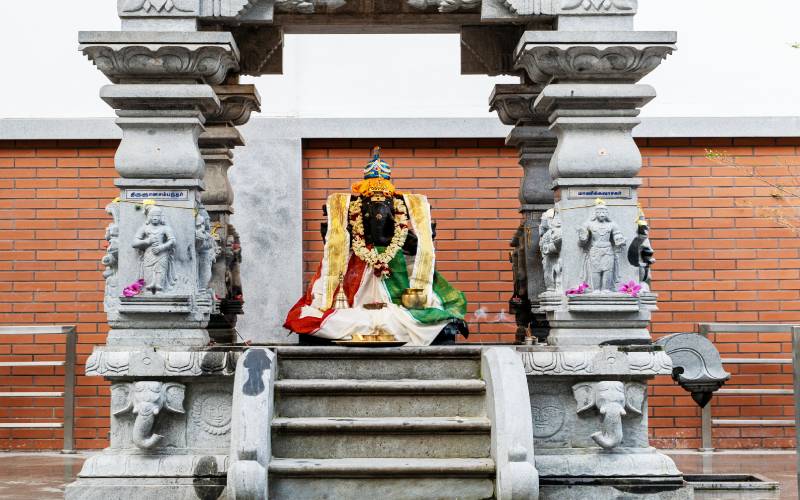
The other side of the gopuram you have the Kamadenu which is the representation of wealth. Goddess Saraswathi is found on the other side of the pillar who is the Vaagdevi, representing knowledge. Brahma can also be seen on the pillar who decides us our destiny. Once we have the wealth of knowledge, our destiny becomes clear. Perhaps this college offers a spiritual conglomeration to every student who seeks education here. Then a peacock looking at Marudhamalai is engraved which represents the qualities like alertness, agility, and strength.
It can be said that the strength and the beauty of peacock exists in the person who has the power of discrimination and the wealth of knowledge. One who possesses all these, definitely has the grace of Goddess Lakshmi. Gaja Lakshmi is one of Her manifestations and she has two elephants beside her. It is mentioned in our shaastra-s that where there are elephants and water, wealth becomes inseparable. On the top of gopuram, one can find an idol of Gaja Lakshmi.
The representations of Parvathi and Parameshwara can be seen below the gopuram. Ardhaanareeshwara symbolizes the union of man and woman and only when one understands the meaning behind the symbol, they get to know how the world functions. It can be clearly seen that Shiva and Shakthi together help us take the world forward. Then of course, one can witness the protecting deities like Vishnu and Lakshmi. Vishnu is the protector, while Lakshmi assumes the role of a sustainer.
Everyone faces many issues in life and Shani is a very important factor. Wherever there is Hanumaan, who is forever meditating on Lord Rama, there the ill-effects of Shani cannot cause any harm. Hanumaan is known as Siriya thiruvadi in Tamil. Whoever sees a Hanumaan vigraha, they are sure to be reminded of the shloka found in ‘Kamba Ramayana.’
"Anjile Ondrai Petran
Anjile Ondrai Thaavi
Anjile Ondraaraaga Aariyarkaaga Egi
Anjile Ondru Petra Anangai Kandayalar Ooril
Anjile Ondrai Vaithan
Avan Emmai Alitthuk Kaappan."
And someone who recites this shloka in front of a Hanumaan vigraha for five times, gets their wishes fulfilled without delay.
The carvings of the Samaya kuravargal naalvar can also be found. They are Appar, Sundarar, Maanikavaasagar and Gnyaanasambandar.
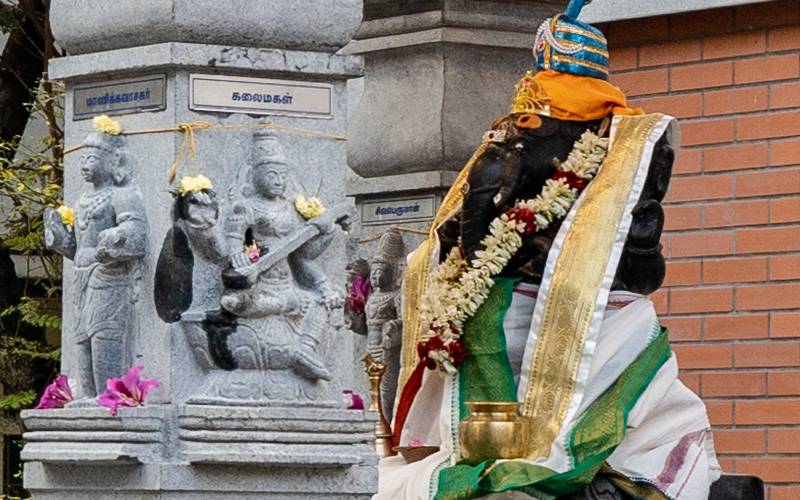
Gnyaanasambandhar was the one to whom Parvathi gave milk and the knowledge. The divine couple gave him the gold thaazham which could possibly be from Seerkazhi. Though Appar could not go to Kailaasam he saw the Kailaasa Kaatchi (Scene of Kailasa) by being at Thiruvaiyaaru. He is here to bless everyone with the kaatchi and beget the arul of Kailaasanaathar. Sundaramoorthi Naayanaar gave us the ‘Thiruthondar Thogai.’ It is the source of ‘Periya Puranam.’ The 63 naayanaar-s are identified only through the text, ‘Thiruthondar Thogai.’ It is said that the first line of this work, “Thillai vaazh adiyarku adiyan,” was revealed by Lord Shiva himself to Sundaramoorthy Naayanaar who is the 63rd naayanaar. In the 12th century, Sekkizhaar, the minister of Kulothunga II uses ‘Thiruthondar Thogai’ to write the ‘Thiruthondar Puranam.’ Maanikavaasagar, the last of the four samaya kuravargal, was known for his unfathomable devotion to Lord Shiva. It is one’s blessing to find four of them at one place. They are usually known as the Naalvar in Tamil.
One can find the representation of Kaaraikal Ammaiyar also inside the shrine. The carvings of the National flower, lotus; animal, tiger; tree, banyan; bird, peacock; fruit, mango; all the four are found here adorning the space near God and Goddess respectively. When you look at the ceiling, Krishna along with his flute is found. One of the names of Bhagavaan Krishna is Venugopalan where venu means a flute made out of bamboo and he is known to have led a simple, and rustic life. He signifies the importance of nature through his lifestyle and also through the usage of natural musical instrument, bamboo. The representation of Krishna found in this temple is important, for its location is Coimbatore which can be rightly called as the ‘Ecological capital of Tamil Nadu.’
The carving of Dakshinaamoorthy can also be seen in the shrine. He can be found posing his hand in chin mudra and transmitting knowledge to his students, Sanakar, Sanathanar, Sananandar, Sanathkumarar under the banyan tree in silence. The significance of the banyan tree lies in the fact that the shoot of the tree grows up into another independent tree, just as how a good teacher in any institution would share his/her knowledge to the students and make them stand independent in the society.
Wherever there is Lord Shiva, there is Vyakarapadha, who has the feet of the tiger as in Chidambaram, and Perur, which is also known as Melai Chidambaram. Owing to the facts that the location of this shrine is closer to Perur and there is the presence of Lord Shiva carvings on the walls, one can be sure to say that there definitely is Vyakarapadha at his feet. At the peetam of the Kongu Ganapathi, one shall witness the navagraha-s. When a person does nine rounds of circumambulation for the Ganapathi, it goes without saying that it is also done for the navagraha-s. Ultimately, one gains the phala of doing nine pradakshina for the navagraha-s.
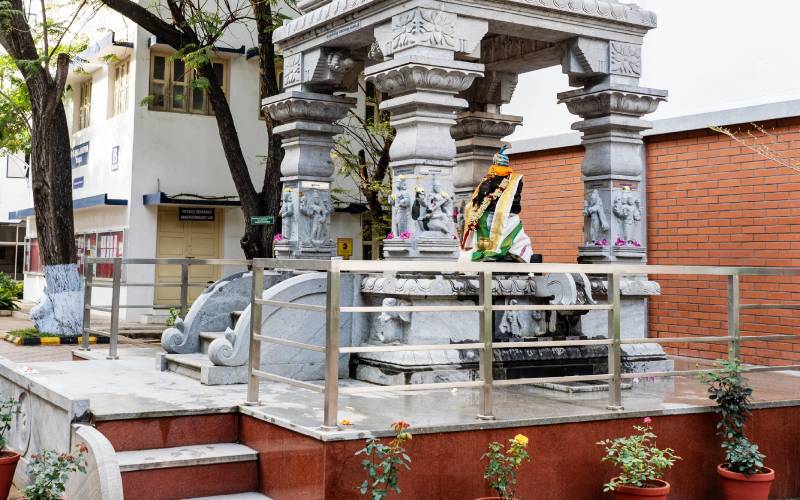
Suryan and Chandran signify the two visible gods to us. In the night we see Chandran, and in the day we see Suryan. Only through the night, we can understand the rest of the astronomical wealth. All the constellations, the nine planets, and the stars, can only be seen in the night. It is definitely a divine grace that if one sits in front of the Ganapathi, he/she can look at all the 27 stars,12 raasi-s and the other circumambulatory deities. There are several obstacles to attain wealth, power, and knowledge and it is Kongu Ganapathi who helps you cross all such hurdles in life with joy.
Karthikeya is also present at the temple, and he bestows one with the tendency to accomplish tasks at a fast phase. One must listen to P. Susheela’s long song in order to artistically understand the birth story of Lord Shanmuga. It goes as,
“Sisu paruvam petru
Sivamsam Thigazha
Kurunagai sinthiya
Senthamarai poonthottinile
Thendralaai aadiyava
Vedathirukku ellam adhipathi thaan endru
Veen aganthai konda naan mugan thannai vaathadi vendru
Sirai ittavane.
Por Kolam konda murugan, purapattaan, parasakthi vel enthi purapattaan
Thigiladikkum padayudan
Kidukidukkum nadayudan
Ettu dhikkum gidu giduthu
Veduvedukka purapattaan
Asurar padai veraruthu
Sooranin serukadithu
Sevalai kodiyaga etrinaan
Mayilai vaaganamaai kai patrinaan.”
If you go to Perur, the Nataraja is in a standing posture and not dancing. He paused for a second so that his tresses are not flying, but they are all on his shoulders. At the Kongu Ganapathi temple, there is the representation of Nataraja like the shrine in Perur, and the four pillars that signify the four Vedas which means knowledge in Sanskrit are also found. Kaala Bairava of Kaasi, the guardian deity of the eternal city, is also found here. Normally, for a Shiva temple, the key is left with the Bairava. There is a popular adage which goes as, “Kallai kandaal naayai kaanum, naayai kandaal kallai kaanum.” It actually means that if you see the Bairava in the stone (idol), you do not see the dog and if you see the dog in the stone, you do not see Bairava.
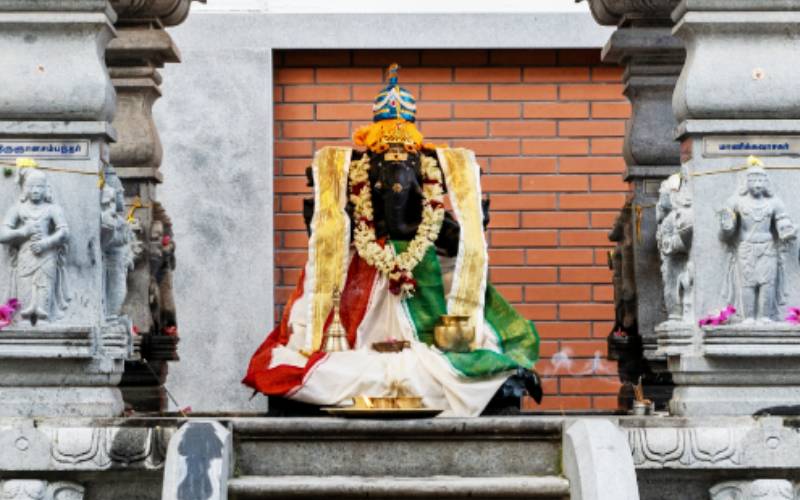
One shall also find the Maanasarovar and Kaasi in one place here through symbolism. The waters with which the abishekam is performed for the deities are treated equal to the waters of Ganga and that collected in a small bowl is treated like Lake Maanasarovar. When our mind becomes crystal-clear like the lake, the power of discrimination is granted by the hamsapakshi.
According to our shaastra-s, there are four purushartha-s or goals in life. They are dharma, the righteous way of living; artha, security; kaama, desire for indulgences; and moksha, liberation. So, one could clearly understand that these four purushaartha-s show us the way to lead a life. The final of the four purushaartha-s, moksha, is a blissful state of complete awareness gained only through the absolute knowledge of the self. Sincere prayers to Kongu Ganapathi help us reduce the hardships that comes along the path of attaining the purushaartha-s and bestow us with the knowledge of that Paramporul which is nothing but moksha.
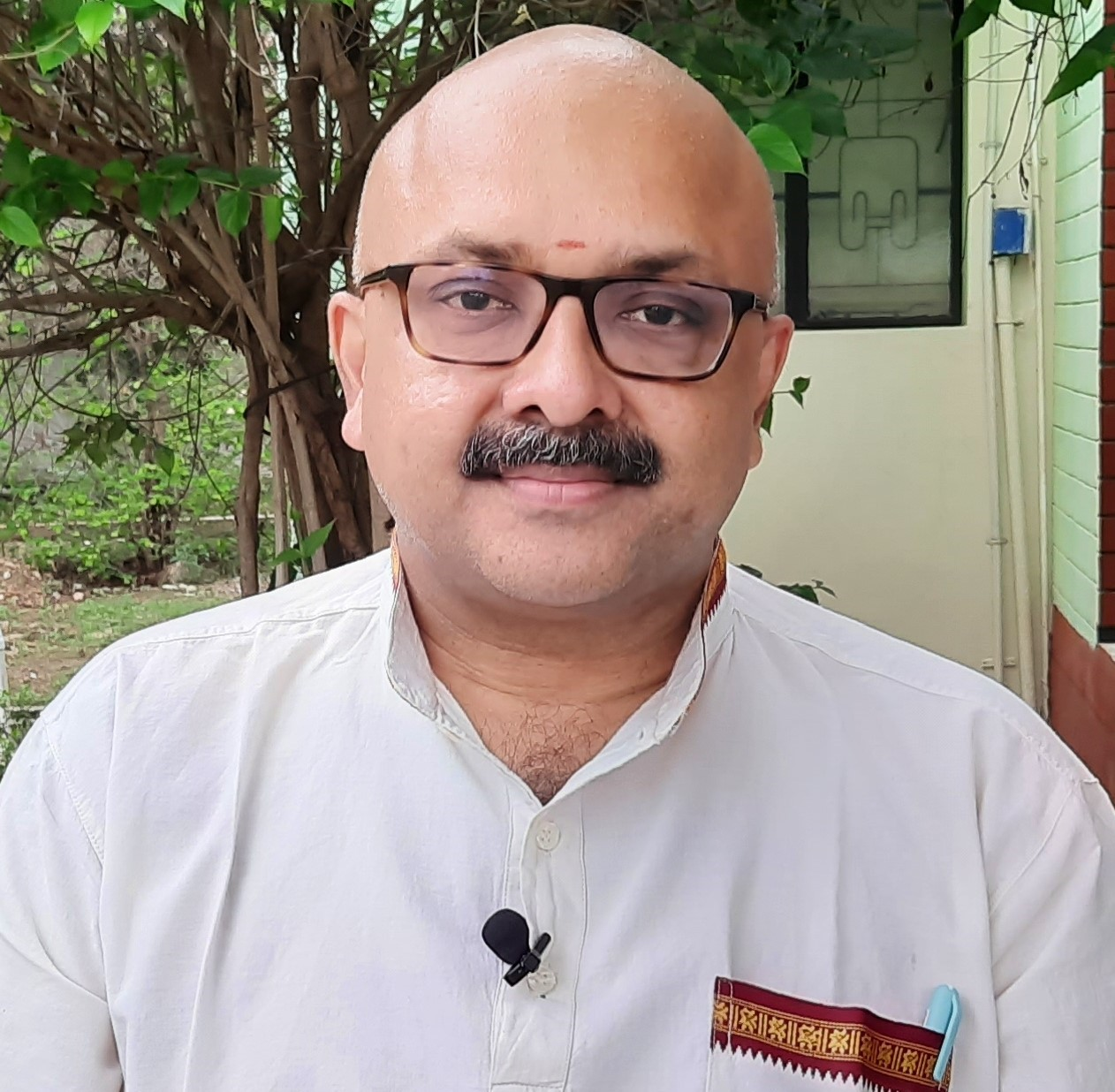 Mr. Rajesh Govindarajulu is one of the founding members of the Verandah Club Pvt. Ltd. He is a leading columnist, historian, jeweler, entrepreneur, and a heritage enthusiast who is earnestly working to revive the past in the light of the present. Experiential learning about the history of Coimbatore is his main course of interest and he is also a panel member of many colleges in the city.
Mr. Rajesh Govindarajulu is one of the founding members of the Verandah Club Pvt. Ltd. He is a leading columnist, historian, jeweler, entrepreneur, and a heritage enthusiast who is earnestly working to revive the past in the light of the present. Experiential learning about the history of Coimbatore is his main course of interest and he is also a panel member of many colleges in the city.
NEXT ARTICLE
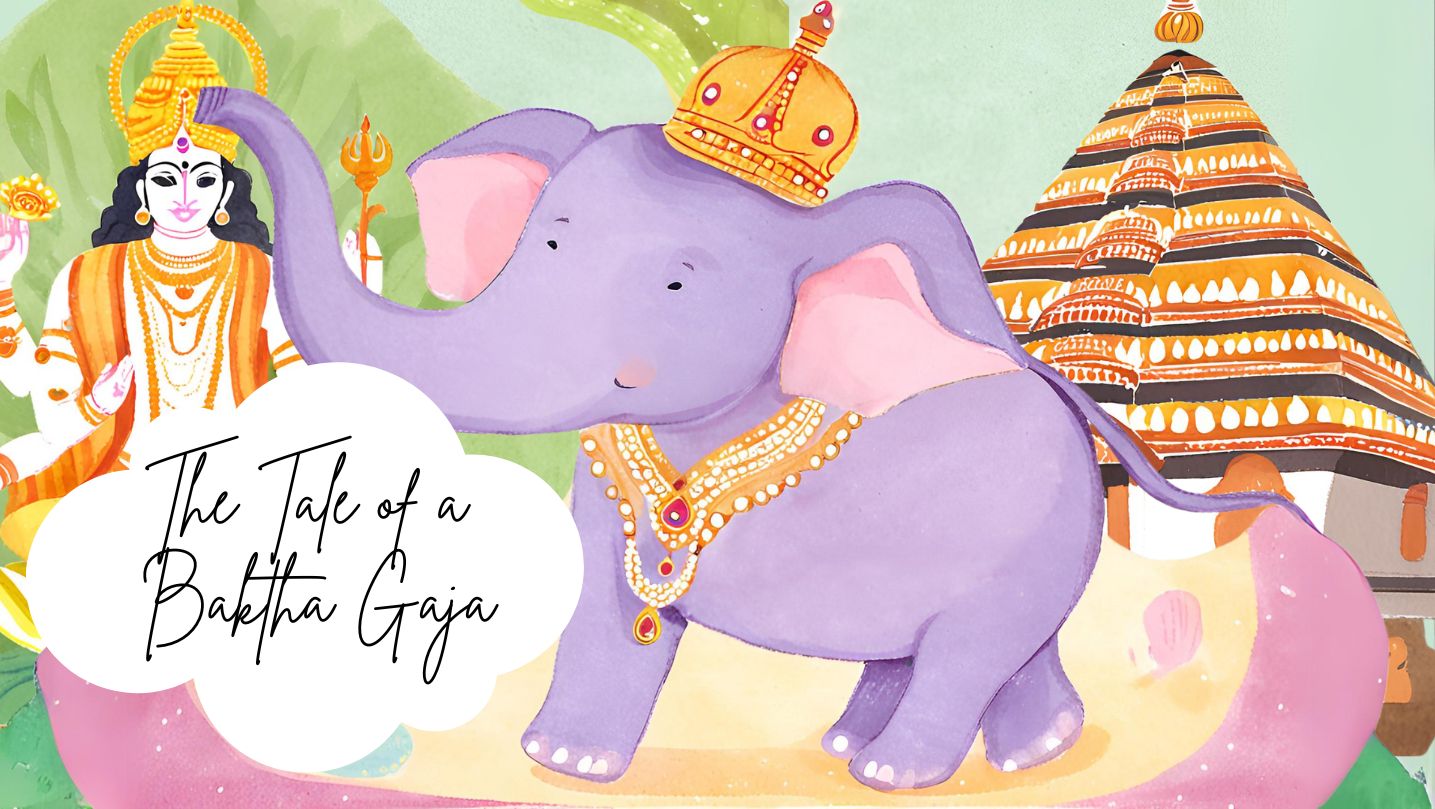
In the lush, green heart of Kerala lived an elephant who became a living legend - a tale of an elephant turned into a bakth. His name was Keshavan, bu...
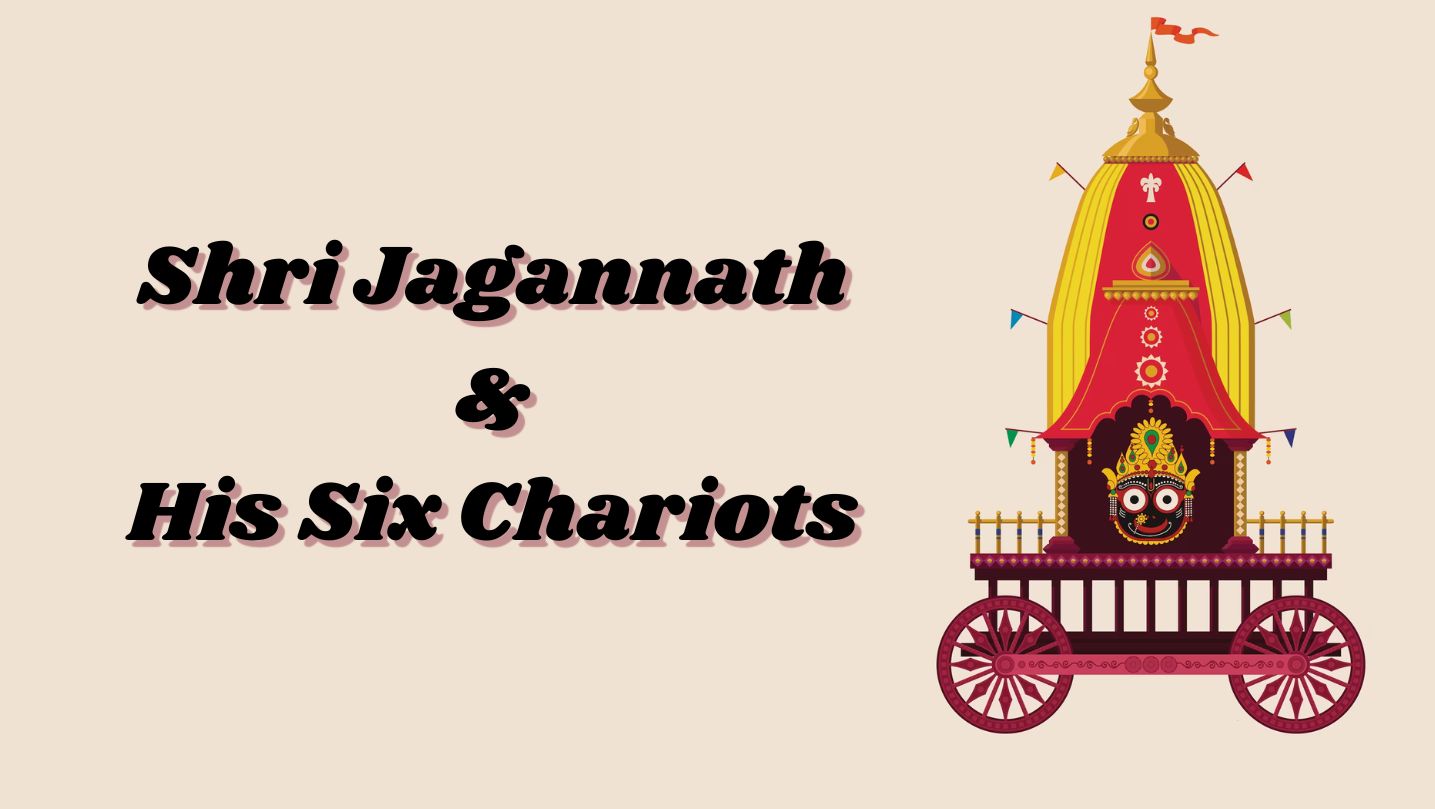
The Chaitanya Charitamrita by Shri Krishna Das Kaviraj provides a vivid description of the operations management of Shri Gundicha Yatra during the tim...
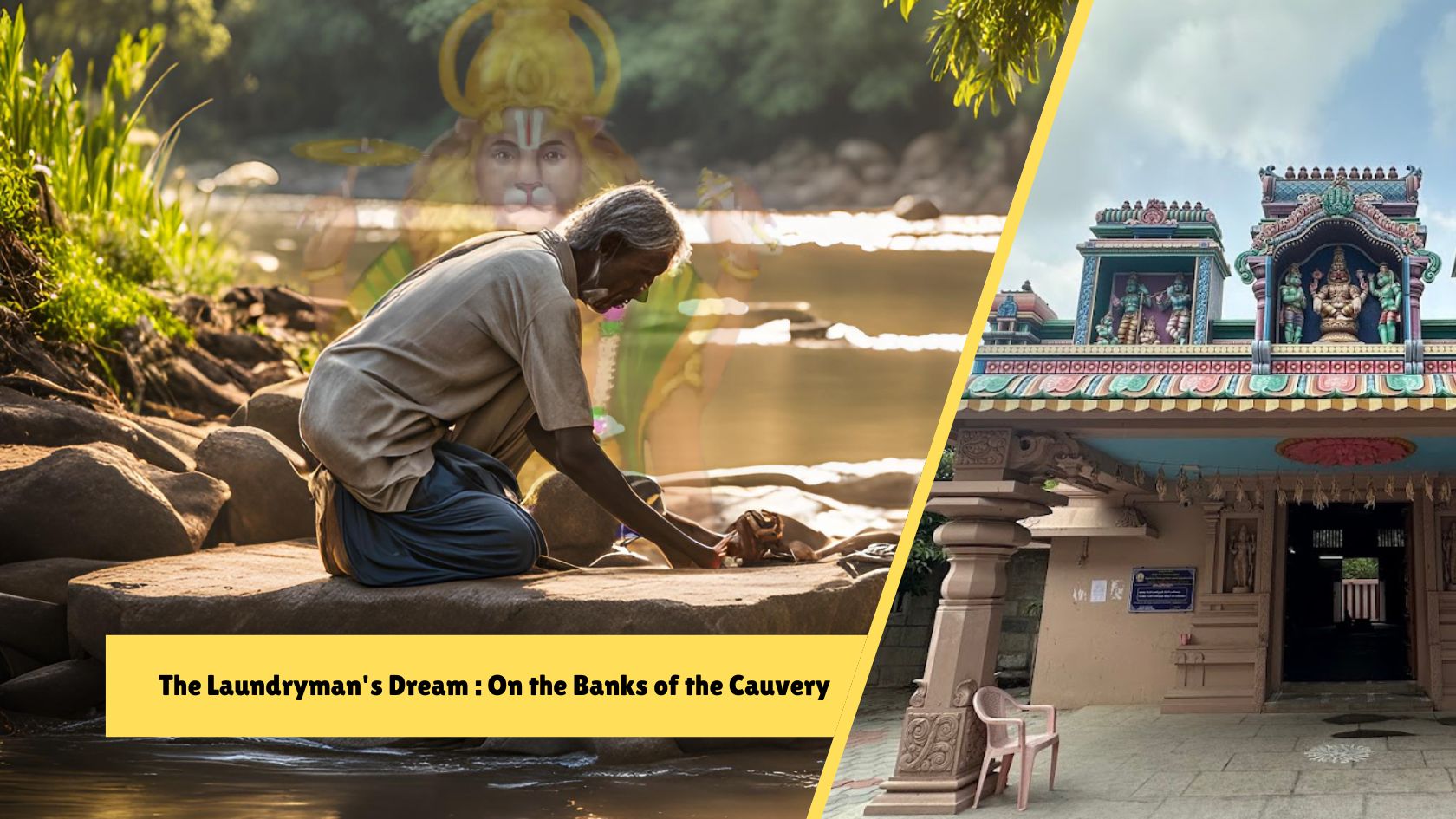
The sun beat down on my back as we stepped out of the car, the air thick with the humidity of rural Tamil Nadu. Chinthalavadi, a small village nestled...